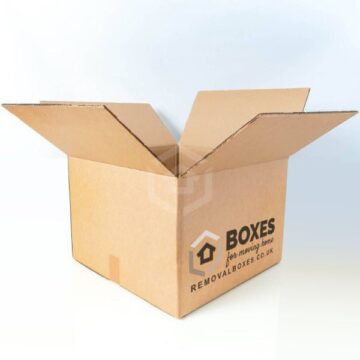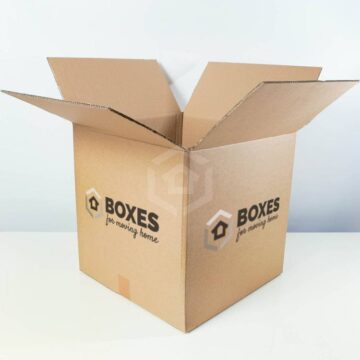The Ultimate Guide to Renting a House:
Renting a house can be an exciting yet daunting process, especially if you’re doing it for the first time. Unlike renting an apartment, a house offers more space, privacy, and the possibility of a garden or backyard, making it an attractive option for families, couples, and individuals looking for a home. However, with these benefits come added responsibilities and considerations. This guide will walk you through the essential steps and considerations you need to make before renting a house, ensuring you make the best decision for your needs and lifestyle.
1. Determine Your Budget
Before you start searching for rental properties, it’s crucial to have a clear understanding of your budget. Your rent should ideally account for no more than 30% of your monthly income. However, you should also factor in other expenses, such as:
- Utilities: Gas, electricity, water, and possibly internet and cable.
- Insurance: While the landlord typically covers building insurance, you’ll need contents insurance to protect your belongings.
- Maintenance Costs: Although the landlord is responsible for most repairs, minor maintenance tasks like lawn care might fall on you.
- Commuting Costs: If you’re moving further from work, your commuting costs might increase.
Checklist:
- [ ] Calculate your monthly income.
- [ ] Deduct essential expenses (e.g., food, transport, savings).
- [ ] Determine how much you can comfortably afford for rent.
2. Research the Area
The location of the house is just as important as the property itself. Research the area thoroughly to ensure it meets your needs and preferences. Consider the following:
- Proximity to Work/School: How long will your commute be? Are there reliable public transport options?
- Safety: Check local crime rates. Speak to potential neighbours or visit the area at different times of the day.
- Amenities: Are there nearby shops, restaurants, parks, and other facilities that you’ll regularly use?
- Schools: If you have children, research the quality of local schools.
- Future Developments: Check if there are any planned developments in the area that could affect your living experience.
Checklist:
- [ ] Research crime rates in the area.
- [ ] Identify local amenities (shops, parks, schools).
- [ ] Consider the proximity to work and transport links.
- [ ] Visit the area at different times to gauge the atmosphere.
- [ ] Look for planned developments that might affect the neighbourhood.
3. Understand Your Rental Needs
Knowing what you need in a rental property can help you narrow down your search and save time. Consider the following:
- Size of the House: How many bedrooms and bathrooms do you need? Do you require additional space, such as a home office or storage?
- Outdoor Space: Do you want a garden or backyard? Is a garage or off-street parking important?
- Pet-Friendly: If you have pets, you’ll need to find a property that allows them.
- Furnished or Unfurnished: Decide whether you want a fully furnished home or if you’ll bring your furniture.
- Length of Tenancy: Consider how long you plan to stay. Some landlords may prefer longer leases.
Checklist:
- [ ] Determine the number of bedrooms and bathrooms needed.
- [ ] Decide if you need a garden, garage, or additional storage.
- [ ] Check if the property is pet-friendly (if applicable).
- [ ] Choose between furnished, part-furnished, or unfurnished properties.
- [ ] Consider the length of the tenancy you’re looking for.
4. Start Your Search
Once you’ve defined your budget, location, and needs, it’s time to start your search. There are several ways to find rental properties:
- Online Portals: Websites like Rightmove, Zoopla, and OnTheMarket list available rental properties with detailed descriptions and photos.
- Local Estate Agents: Visit local estate agents who specialise in rental properties in your chosen area. They may have properties that haven’t yet been listed online.
- Social Media and Word of Mouth: Sometimes properties are advertised on social media or through local community groups. Don’t hesitate to ask friends or family if they know of any available rentals.
- Drive Around: If you’re interested in a specific area, take a drive around to look for “To Let” signs.
Checklist:
- [ ] Browse online rental portals regularly.
- [ ] Register with local estate agents.
- [ ] Ask friends, family, and colleagues for leads.
- [ ] Explore the neighbourhood for “To Let” signs.
5. View Potential Properties
After identifying a few potential properties, arrange viewings to get a closer look. When viewing a property, pay attention to the following:
- Condition: Check for any signs of damage, mold, or dampness. Ensure that the windows, doors, and locks are secure and in good working order.
- Water Pressure and Heating: Test the water pressure in the taps and showers. Ask about the heating system and whether it’s efficient.
- Natural Light: Notice how much natural light the house receives. Dark rooms can feel gloomy and may increase energy bills if you need to use lights during the day.
- Storage: Ensure there’s enough storage space for your belongings, including closets, cabinets, and possibly a basement or attic.
- Neighbours: Try to meet the neighbours or observe the neighbourhood’s noise levels and overall vibe.
Checklist:
- [ ] Inspect the property for signs of damage or disrepair.
- [ ] Test water pressure and inquire about heating efficiency.
- [ ] Evaluate the natural light in each room.
- [ ] Assess the available storage space.
- [ ] Consider the neighbourhood’s noise levels and atmosphere.
6. Understand the Tenancy Agreement
Once you’ve found a house you like, the next step is to understand the tenancy agreement. This legal document outlines the terms and conditions of your rental, so it’s crucial to read it carefully. Key points to look for include:
- Rent Amount and Payment Dates: Make sure the rent amount is correct and understand when it’s due each month.
- Deposit: Confirm the amount of the security deposit and where it will be held. In the UK, landlords are required to protect your deposit in a government-approved scheme.
- Maintenance Responsibilities: Understand who is responsible for maintenance tasks like lawn care, minor repairs, and utilities.
- Break Clause: Check if there’s a break clause that allows you to terminate the lease early under certain conditions.
- Notice Period: Understand how much notice you need to give if you decide to move out.
If there’s anything you don’t understand or agree with, ask the landlord or estate agent for clarification.
Checklist:
- [ ] Review the rent amount and payment schedule.
- [ ] Confirm the security deposit details.
- [ ] Understand your maintenance responsibilities.
- [ ] Check for a break clause in the tenancy agreement.
- [ ] Note the required notice period for ending the tenancy.
7. Conduct a Thorough Inventory
Before moving in, conduct a thorough inventory check with the landlord or letting agent. This document records the condition of the property and its contents at the start of the tenancy. It’s essential for protecting your deposit at the end of the lease.
- Photograph Everything: Take photos of the property and any existing damage or wear and tear. Include these in the inventory report.
- Check Appliances: Ensure all appliances are working and note their condition.
- Document Issues: Report any issues or discrepancies in writing to the landlord immediately.
Checklist:
- [ ] Complete a detailed inventory with the landlord or agent.
- [ ] Take photographs of the property’s condition.
- [ ] Test and document the condition of all appliances.
- [ ] Report any issues or discrepancies in writing.
8. Set Up Your Utilities
Once you’ve signed the tenancy agreement, it’s time to set up your utilities. This includes:
- Electricity and Gas: Contact the existing providers to transfer the account to your name or set up a new account with your preferred supplier.
- Water: Notify the local water supplier of your move-in date.
- Council Tax: Register with the local council to set up your council tax account.
- Broadband and Phone: Arrange for broadband and phone services. Some providers may require advance notice to set up the connection in time.
- TV Licensing: If you watch live TV or use the BBC iPlayer, you’ll need to update your TV licence.
Checklist:
- [ ] Transfer or set up your electricity and gas accounts.
- [ ] Notify the water supplier of your move-in date.
- [ ] Register for council tax with the local council.
- [ ] Arrange broadband and phone services.
- [ ] Update or obtain a TV licence.
9. Consider Renters Insurance
Renters insurance isn’t mandatory, but it’s highly recommended. This insurance covers your personal belongings against theft, damage, or loss. It may also include liability coverage if you accidentally damage the landlord’s property.
- Contents Coverage: Protects your personal belongings, such as furniture, electronics, and clothing.
- Liability Coverage: Covers accidental damage to the property or if someone is injured while visiting.
- Additional Coverage: Some policies offer add-ons like coverage for high-value items or protection against accidental damage.
Checklist:
- [ ] Compare renters insurance policies.
- [ ] Choose a policy that covers your belongings and liability.
- [ ] Consider additional coverage for valuable items.
10. Moving In
The moving day is both exciting and exhausting. To make the process smoother, consider the following tips:
- Hire a Moving Company: If you have a lot of belongings, consider hiring a professional moving company to handle the heavy lifting
- Organise your Removal Boxes: Buying the write removal boxes for your move is essential. Weak and cheap boxes turn into a nightmare. Buy Strong Removal Boxes Here.
- Pack Early: Start packing well in advance to avoid last-minute stress. Label your Removal Boxes with their contents and the room they belong in. More Help Here: Labelling your Removal Boxes.
- Update Your Address: Notify important contacts of your new address, including banks, employers, and healthcare providers. Consider setting up mail redirection with Royal Mail to catch any missed updates. More Help Here: Moving House Address Change.
- Inspect the Property: On moving day, inspect the property one last time to ensure it’s in the agreed condition. Report any new issues to the landlord immediately.
- Settle In: Take some time to familiarise yourself with your new home and neighbourhood. Introduce yourself to the neighbours and explore local amenities.
Checklist:
- [ ] Hire a moving company or rent a van.
- [ ] Buy strong removal boxes.
- [ ] Start packing and label boxes by room.
- [ ] Update your address with important contacts.
- [ ] Set up mail redirection with Royal Mail.
- [ ] Conduct a final inspection of the property on moving day.
11. Maintain Good Communication with Your Landlord
Maintaining a positive relationship with your landlord can make your tenancy smoother and more enjoyable. Keep the lines of communication open and report any issues promptly. This includes:
- Reporting Maintenance Issues: Notify your landlord of any repairs needed as soon as possible. Early reporting can prevent small issues from becoming bigger problems.
- Paying Rent on Time: Always pay your rent on time to avoid late fees and maintain a good relationship.
- Requesting Permission for Changes: If you want to make any changes to the property, such as painting walls or installing shelves, always ask for permission first.
Checklist:
- [ ] Report maintenance issues promptly.
- [ ] Pay rent on time each month.
- [ ] Request permission before making any changes to the property.
12. Prepare for the End of Your Tenancy
As your tenancy comes to an end, there are a few steps you should take to ensure a smooth exit and the return of your security deposit:
- Give Notice: Provide the required notice period in writing to your landlord.
- Deep Clean: Ensure the property is cleaned to the same standard as when you moved in. This includes carpets, windows, and appliances.
- Repair Any Damage: Fix any damage you caused during the tenancy. This could include filling nail holes or repainting walls.
- Final Inventory Check: Conduct a final inventory check with your landlord or letting agent to compare the property’s condition to the original inventory.
- Return Keys: Return all keys to the landlord on the agreed date.
Checklist:
- [ ] Provide written notice to your landlord.
- [ ] Deep clean the property before moving out.
- [ ] Repair any damage you caused during the tenancy.
- [ ] Conduct a final inventory check with the landlord.
- [ ] Return all keys to the landlord.
Conclusion
Renting a house is a significant decision that requires careful planning and consideration. By following this guide, you can navigate the process with confidence, from setting your budget and researching neighbourhoods to understanding your tenancy agreement and preparing for the end of your lease. Remember, renting a house is not just about finding a place to live—it’s about finding a home that suits your lifestyle and needs. With the right approach and a detailed checklist, you’ll be well-equipped to make an informed and satisfying choice. Happy house hunting!



